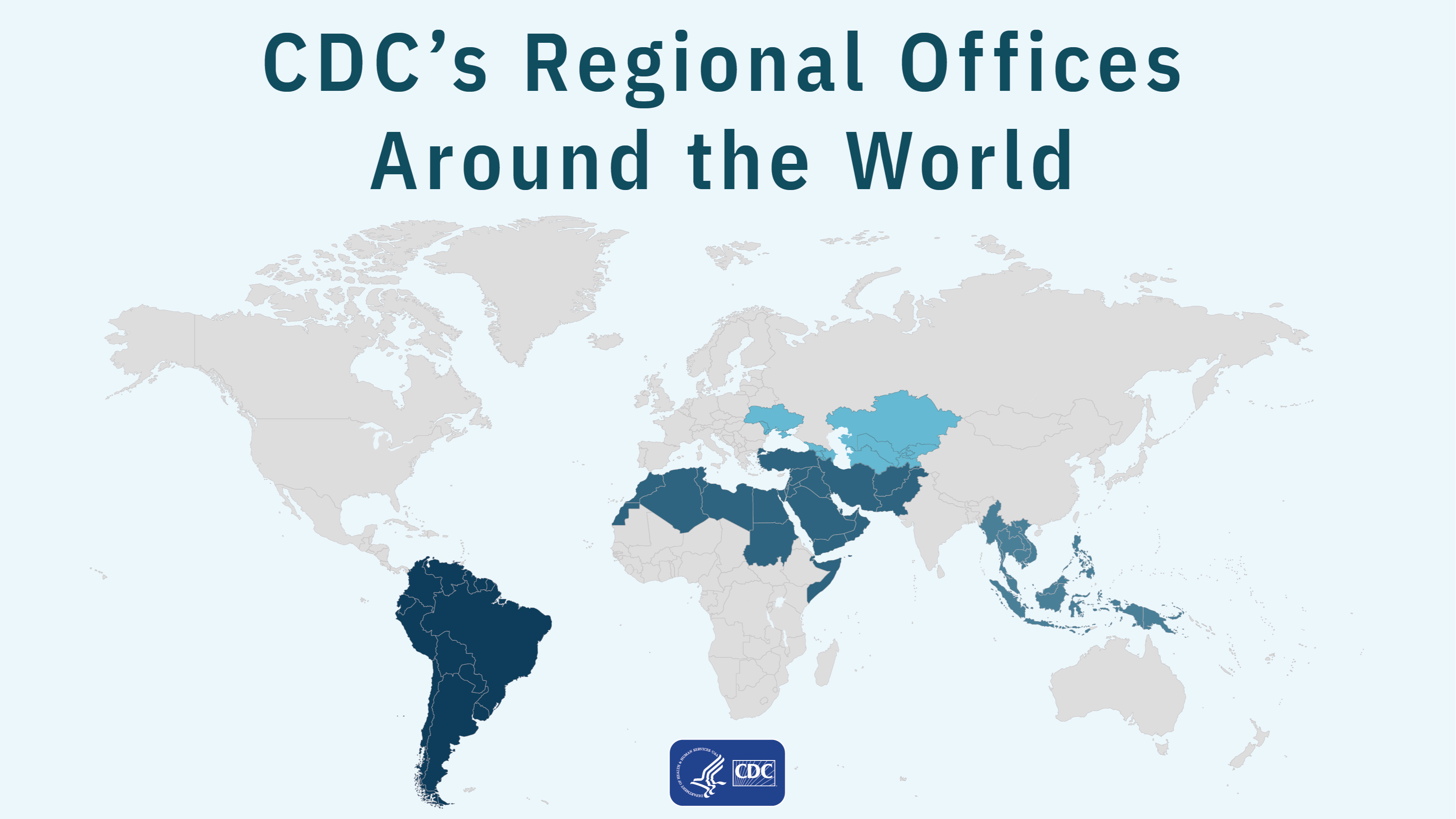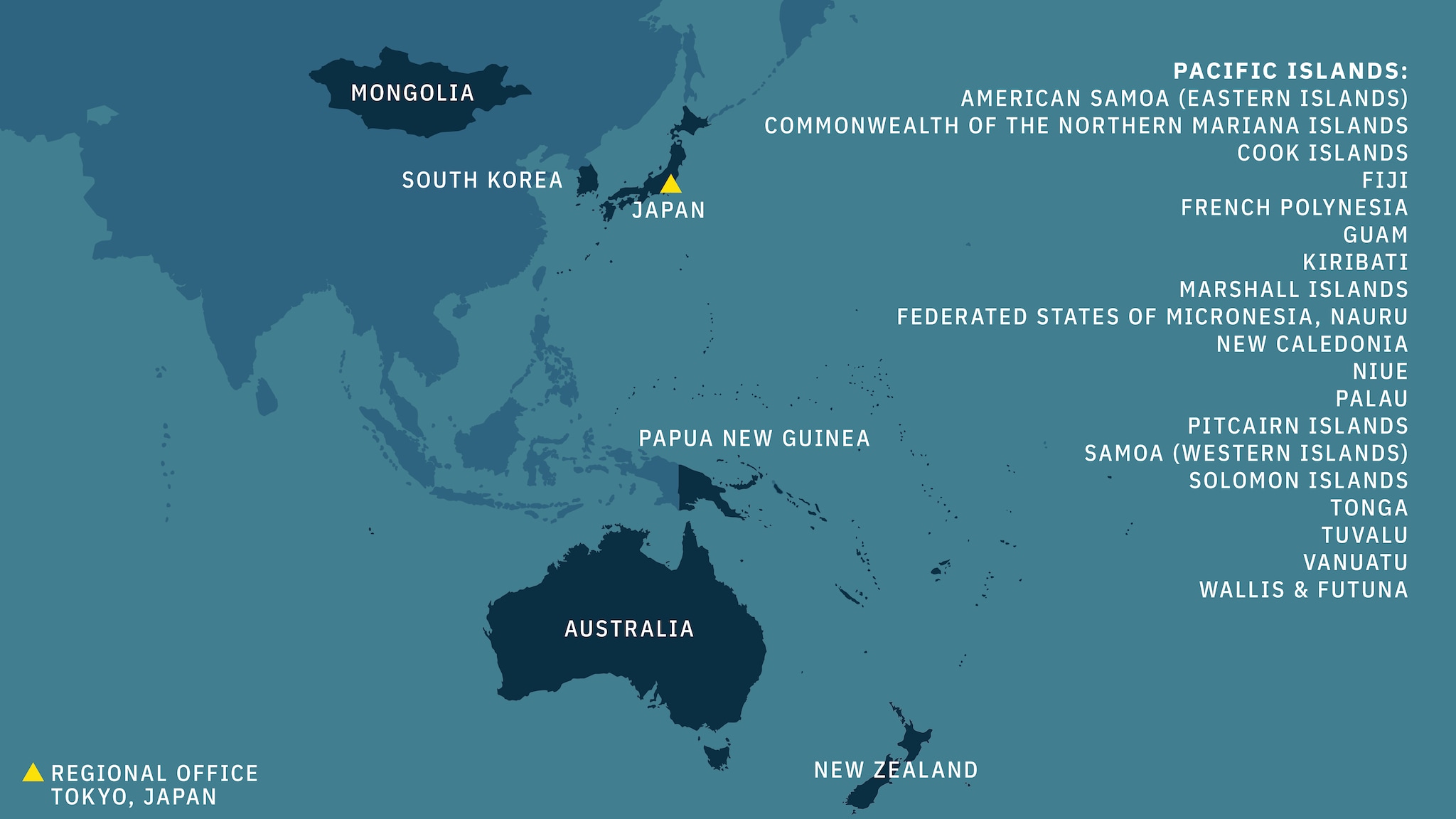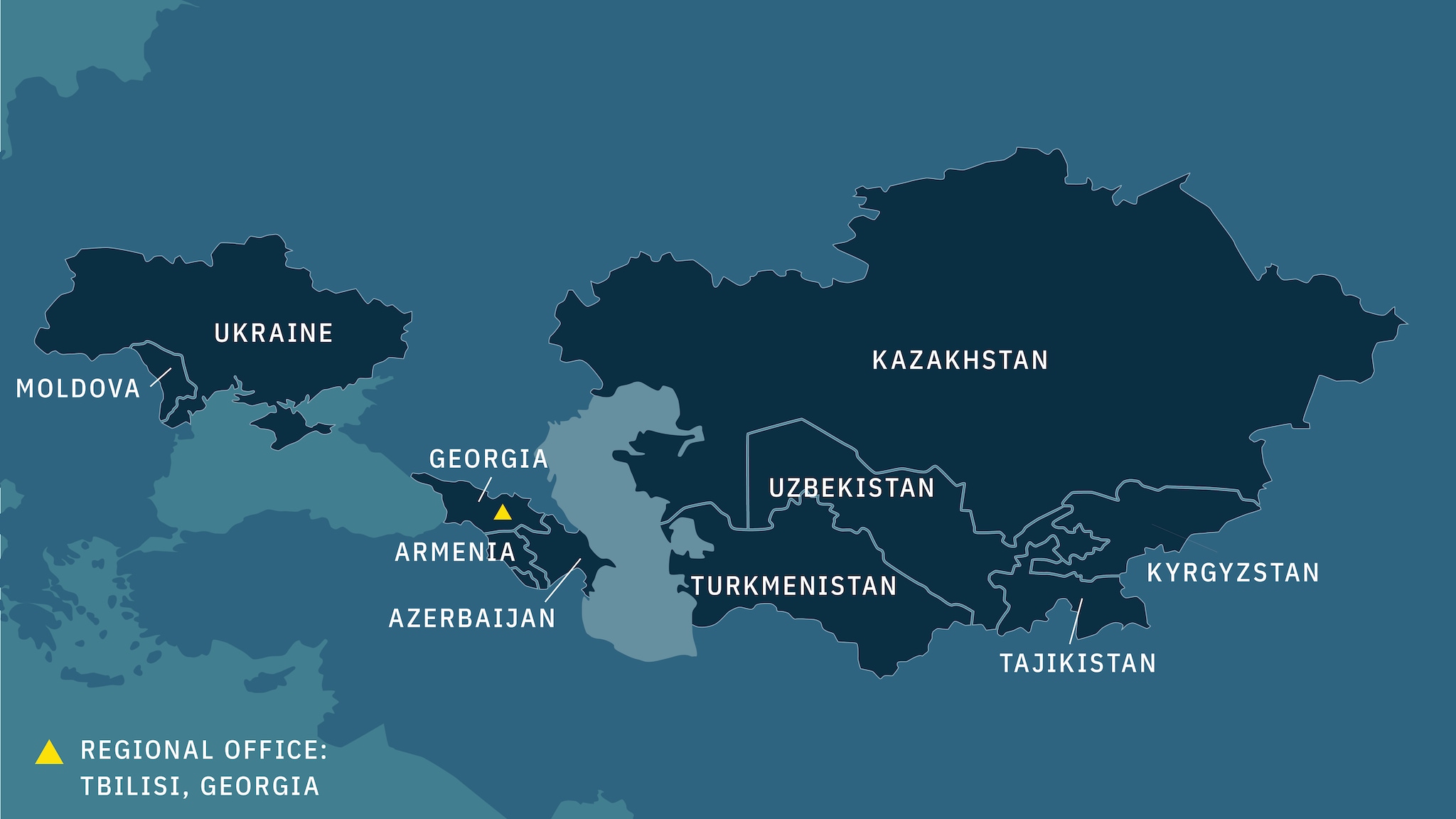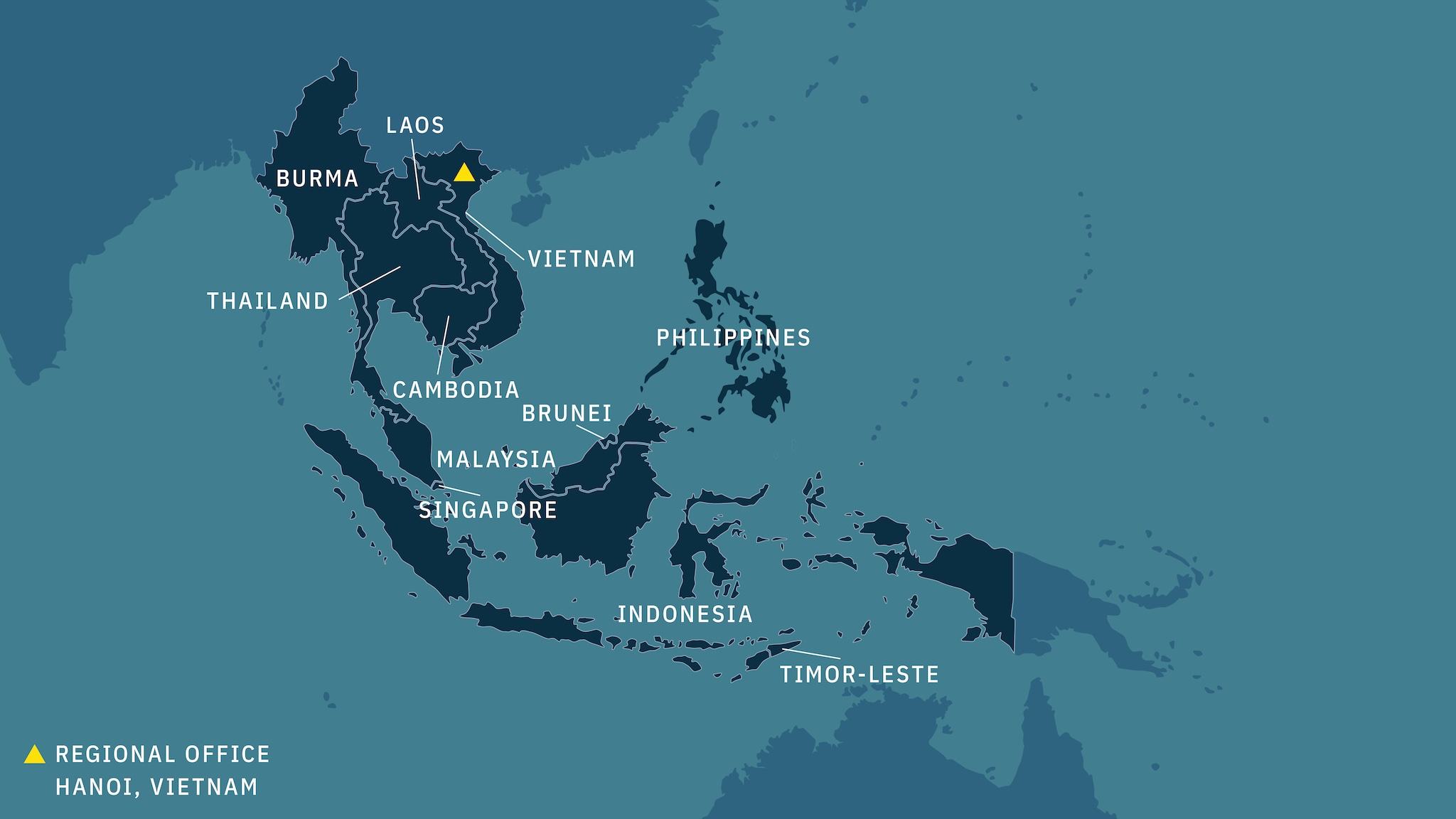At a glance
Regional offices support U.S. CDC to prevent, detect and respond rapidly, efficiently, and effectively to health threats wherever they occur. Regional offices are part of a U.S. CDC network of regional and country offices in over 60 countries. Since 2020, U.S. CDC has established six regional offices, covering Eastern Europe/Central Asia, the Middle East/North Africa, South America, Southeast Asia, Central America and the Caribbean, and East Asia/Pacific.

Our approach
Our agency has a network of regional and country offices in over 60 countries. Incorporating a regional approach strengthens our ability to:
- Advance global health security.
- Implement sustainable, long-term overseas structures.
- Expand the reach of technical assistance and programs.
- Respond rapidly to disease outbreaks.
- Efficiently leverage assets and financial resources.
Through all our overseas platforms, our agency is in a better position to prevent, detect, and respond to health threats and infectious diseases. This also enables us to address broader health issues that have tremendous impacts worldwide. No matter the threat, we know we can protect the health of Americans and people around the world.
Our agency is committed to creating a world where people—in the United States and around the globe—live healthier, safer, and longer lives.
Our work
CDC regional offices:
Build capacities across the regions in surveillance and data use, laboratory, workforce development, emergency preparedness and outbreak response.
Collaborate with CDC country offices to advance programs bilaterally and promotes intra-regional collaboration.
Coordinate closely with partners to advance global health security activities across multiple countries in the region.
Facilitate activities that have a regional focus.
Support the coordination of interagency work as one U.S. government around the world.
Uphold our agency-wide Global Health Strategy for advancing public health and health security.
Work with subject matter experts from CDC headquarters and CDC country offices, to engage CDC programs, priorities, and scientific expertise.






